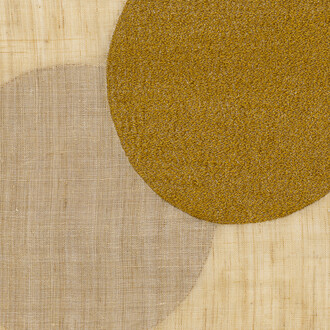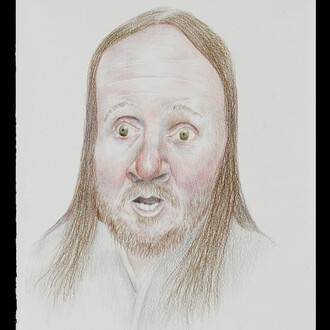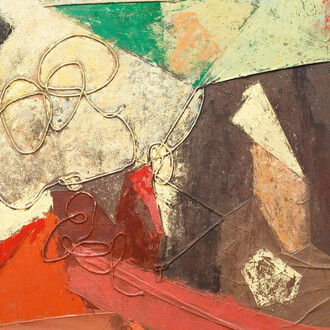Since the mid-1960s, Keith Sonnier seamlessly integrated an array of media into his practice while prioritizing concept, process, and duration. This presentation marks the artist’s first posthumous institutional exhibition in the United States, featuring a group of works realized between 1968 and 1970. During this formative period the artist radically reconsidered the haptic, spatial, and temporal dynamics of sculpture: from what he referred to as his “floor-to-wall” sculptures to installations that envelop their architectural surroundings with light and color.
While pursuing his MFA at Rutgers University Sonnier met like-minded artists including Allan Kaprow, Robert Morris, and Jackie Winsor. The convention-defying atmosphere, with Happenings and Fluxus activities uniting the performing and visual arts in newfound ways, inspired the artist to incorporate responsive, often ephemeral and quotidian materials that could be manipulated and redefined in situ. His sculptures and installations became integral to the emergence of Postminimal art, with most works on view featured in paradigm-shifting group exhibitions in the United States and Europe.
The early Rat-tail exercise (1968) and Flocked wall (1969) are emblematic of Sonnier’s works’ direct engagement with their confines and corporeality. Composed of latex, flocking, and rubber strings of varying lengths, the irregular grid of Rat-tail exercise delineates its spatial stretch from floor to wall, while evoking a follicle-like extension, as the title implies. “Richard [Serra] was casting lead against the wall, but I was doing floor-to-wall relationships with latex where I was casting the wall itself. I’d pull it off, and it was very seductive, like flesh. . . . That’s why I called one Rat-tail exercise . . . although the shapes were very abstract, they looked very much like they belonged to the animal kingdom”, said the artist. Similarly, in Flocked Wall, the wall is cast with latex and sprinkled with flocking, then cut and partially peeled off. In In Between (1968), the latex is sandwiched between the wall and a pane of glass, also functioning as an adhesive, while the composition is flanked and further animated by flashing 100-watt light bulbs, suggesting a doorway.
In Between provides a material bridge between the artist’s earliest incorporations of light and his first neon work, Untitled (also: neon and cloth) (1968), highlighting fabric and neon as materials with psychological, sensual, and embodied implications. A crescent-shaped neon tube situated between painterly threads of pastel-colored satin and sheer cloth on the wall, this hybrid work recalls Sonnier’s memories of Mamou, Louisiana, from the bayou moon and the city’s hazy artificial glow to his mother’s old gowns that he would scrap for materials. Contradictory combinations, such as hard neon with soft cloth, were spurred by impulses the artist described as “erotic, sensual—they were more understood if they were felt”. Adhered to the floor, Untitled (1969) comprises translucent fabric layered between sheets of gray flocked latex, juxtaposing the transparent with the opaque and the malleable with the fixed. In a comparable manner, the arcs of Flocked neon (1969) and Lit circle red with Flutex (1968/2013) engineer more fluid and flexible possibilities for the commercially associated neon.
At the turn of the decade, Sonnier’s experiments with neon began to extend off the wall, demonstrating the volumetric potential of light and color. Ba-O-Ba VI (Secondary triad) (1970), at the center of the gallery, draws inspiration from the artist’s 1969 trip to Haiti, with the term Ba-O-Ba derived from a Haitian-Creole phrase referring to “the effect of moonlight on the skin”. Consisting of twin- and queen-size sheets of foam stacked and propped up against the wall, and outfitted with links of neon tubes, the work implicates the body and encourages movement through space and light. Scaling up this embodied experience, the installation Dis-play II (1970) fills a darkened room with fluorescent pigments, foam volumes, and various artificial lights, overloading the space with sensory stimuli.
Together the works on view reconstitute the pivotal, early years of Sonnier’s practice, encapsulating foundational concerns and innovative strategies that defined his artistic vocabulary, including the entanglement of material, light, time, and space, as well as the cultivation of psychological and sensual evocations through process and form.




